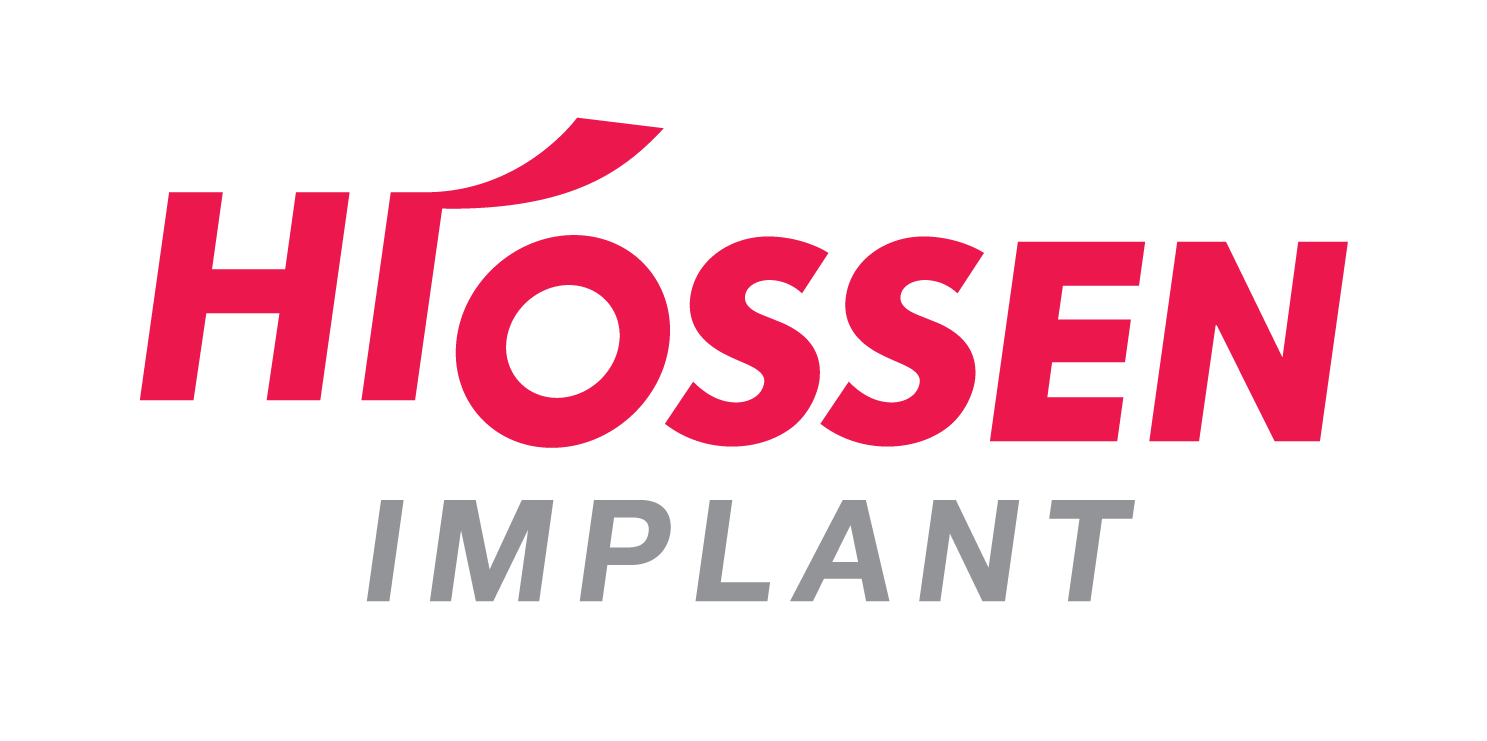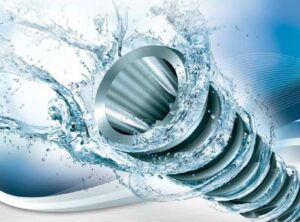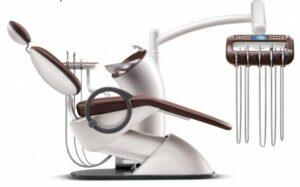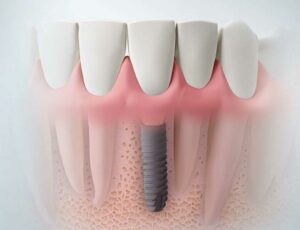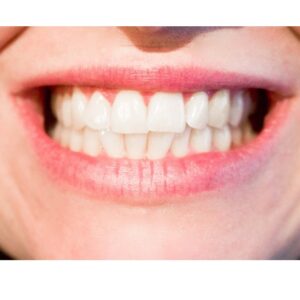According to the National Institute of Dental and Craniofacial Research, adults age 20 to 64 have an average of 25 of their 32 natural teeth left. For many of these adults, dental implants are a beneficial management strategy for missing teeth. Dental implants allow increased restoration of normal mouth function while avoiding the common pitfalls of other restoration methods.
Dental implants have evolved tremendously throughout history, especially within the modern era. Recent technological advances have expanded the types of implants available, as well as the methods used for their insertion. These advances benefit both patients and clinicians by empowering them to select and implement a configuration that is tailored to their situation. Learn more about the types of dental implants available and current implant techniques used.
What Are the Different Types of Dental Implants?
Though all dental implants restore lost teeth, they can do so in different ways. The positioning, materials and brand help distinguish each type of dental implant.
Types of Dental Implant Positioning
The positioning of an implant is determined by a patient’s jawbone health and preference. Depending on these factors, you may work with one of the following implant types:
- Endosteal implants: Endosteal implants are placed directly into the jawbone. They are typically made from titanium and shaped like small screws. The endosteal variety is the most common type of dental implant because it protects a patient’s jawbone from deteriorating over time. An endosteal implant requires a good amount of bone density for insertion. Patients with low bone density may require a bone graft to strengthen the jaw before the procedure.
- Subperiosteal implants: Subperiosteal implants are placed under the gums. A key difference between subperiosteal and endosteal implants is that subperiosteal devices are not embedded in the jawbone, but placed on or above it. The implants typically used in patients who do not have enough healthy jawbone to support an endosteal implant and do not want to complete a bone graft to rebuild the jawbone.
A doctor will assess a patient’s jawbone density to determine which implant position will best protect the mouth while taking the patient’s preferences under consideration.
Types of Dental Implant Materials
Dental implants can be made from a few different materials. Each material affects an implant’s price and has unique advantages.
Most dental implants are made from titanium or zirconia:

- Titanium implants: Titanium has long been used for hip or knee replacements because it fuses well with bone. The metal has been time-tested to be a successful and long-lasting option for dental implants. It’s strong and durable, yet lightweight. Some people aren’t good candidates for titanium implants because of allergies or autoimmune disease.
- Zirconia implants: Zirconia is a metal-free crystal material that is fairly new to being used in dental implants. The one-piece construction of zirconia makes for a shorter surgery when compared to titanium’s three pieces. There’s also no chance that zirconia could agitate a metal allergy. Because zirconia implants are newer, there isn’t as much evidence to support how long-lasting they might be. In addition, zirconia implants are more expensive than titanium options.
Implants are also sometimes made from gold, stainless steel or cobalt-chromium. These alternative metals have lower success rates, however, and are not used as often. Based on current studies, titanium is the best material for dental implants.
Brands of Dental Implants
Whether you’re a patient seeking an implant or a professional who inserts implants, you have a choice when it comes to the dental implant brand you use. Researching different implant brands and their products can help you make an informed decision.
Here are some factors to consider when searching for the best dental implant brand:
- How many years of experience does the company have?
- What kind of reviews does the product have?
- What do dentists recommend?
- What materials and quality do you see in the product?
- What kind of research and technology does the company have?
- Is the product FDA compliant?
Though researching implant companies is a must, remember that dental implants are highly effective. Their cost-effectiveness, success rate and contribution to a patient’s oral health make them one of the best options available for tooth replacement. Take your time finding a company you trust to maximize the benefits dental implants offer.
What Are the Different Dental Implant Techniques?
Once you’ve selected a dental implant type that works best for a situation, you can determine how to put it in place. Several different techniques exist to secure dental implants in place.
Traditional Implant Technique
A traditional implant technique usually starts with an endosteal implant made from three parts. The implant itself appears similar to a screw and acts as the artificial tooth’s root. This part is embedded in the jaw during surgery. There is typically one implant for each artificial tooth, but this can vary based on the number of missing teeth a patient has.
The middle connector piece is called the abutment. It attaches to the top of the implant and holds the crown of the tooth. After an implant has healed for several weeks, a crown that has been custom-made to match the patient’s other teeth is attached to the abutment to complete the dental implant.
The traditional technique requires methodical phases that may take place over several months. While this may be ideal for patients who have lost a few teeth, there are alternative implant techniques that may work better in different scenarios.
Alternative Implant Techniques
Alternative implant techniques may expedite or improve the traditional technique for eligible patients. There are several options:
- Immediate load dental implants: Using this method, doctors place a temporary tooth onto the implant right after they have inserted it. Traditional dental implants require a period of healing before a crown is placed. The immediate load technique incorporates a temporary tooth — which is eventually switched out for a long-term crown — right after the surgery. In a sense, this allows patients to get dental implants in one day. This technique may be an option if the patient has enough natural bone and the implant is extremely secure.
- Mini dental implants: Mini implants are close to the size of a toothpick. A mini implant requires less invasive insertion and is typically used to stabilize lower dentures. If a patient is missing most of their teeth and uses dentures, mini dental implants may help keep the dentures in place to a greater degree. Mini implants typically aren’t used to substitute normal implants because they cannot withstand the full pressure of eating and biting.
- Full-Arch Restoration implants: Full-Arch Restoration implants may be a solution for patients who are missing most or all of their top or bottoms teeth. This technique provides full mouth dental implants using just four titanium implants in the jawbone. It may be a good option for patients who have adequate jawbone density to support a full arch of teeth. Though Full-Arch Restoration implants can be convenient, they are not for everyone. A doctor and patient will work together to consider if this method may be a good option.
Choosing a dental implant and placement technique requires close collaboration between a patient and doctor. If the traditional technique is the best option, the patient and doctor will walk through the following steps together.
The Dental Implant Procedure
Dental implants require a high level of collaboration between patients and doctors. At each step, patients and doctors can decide what methods make sense and how to proceed accordingly. Here is what you can expect before, during and after a dental implant procedure.
Before the Procedure
Once a doctor has identified the need for dental implants, they will work with the patient to determine the details of the procedure. This may include making decisions about:
- Endosteal versus subperiosteal implants
- Titanium versus zirconia implants
- What brand of implants to use
- A traditional technique versus an alternative technique
Before the procedure, a surgeon can explain how they will put the dental implants in and ensure the patient is adequately prepared for the unique dental implant type and technique that will be used.
During the Procedure
On the day of the procedure, here is what to expect from dental implant surgery:
- If there is still a tooth in question, the oral surgeon can extract it right before the implant insertion.
- The surgeon will numb the patient’s mouth with local anesthesia.
- The surgeon will make an incision into the patient’s gums to expose the bone below.
- If inserting an endosteal implant, the surgeon will use a special drill to create a space in the jawbone for the implant.
- The surgeon will place the implant into the hole and secure it.
- Depending on the type and technique used, surgeons may repeat this process several times in different locations.
- The surgeon will close all holes with one to two stitches.
If using an immediate load or Full-Arch Restoration technique, surgeons will then place a temporary crown onto the implant. The implant will need to heal for several weeks before receiving the permanent crown.
After the Procedure
Depending on the type of anesthesia used during the procedure, patients will feel varying levels of alertness afterward. While recovering from a dental implant procedure, a patient may experience common symptoms such as:
- Bruised gums or skin
- Swollen face or gums
- Minor bleeding
- Pain at the surgery site
A dentist may prescribe pain medications or antibiotics to help ease any discomfort. Following the surgery, patients will need to eat soft foods for seven to 10 days while their mouth heals. Healing time will depend on the number of teeth implanted, the patient’s bone health and the patient’s overall health. While the implant is healing, a dentist can develop a realistic crown to place on the implant. Once the implant has healed, a surgeon can attach it to the abutment.
Dental Implant Procedure Tools
A patient’s safety and the accuracy of their implant is of utmost importance. Accordingly, there are several tools available for oral surgeons to help ensure precise placements. Known as guided solutions, options include a surgical guide for dental implants as well as drill guides.
Guides can help surgeons place implants in the correct place, plan spacing and give each patient a custom solution. Manufacturers offer guides that utilize a variety of technology for different applications.
Here are the guided dental implant solutions Hiossen® Implant offers:
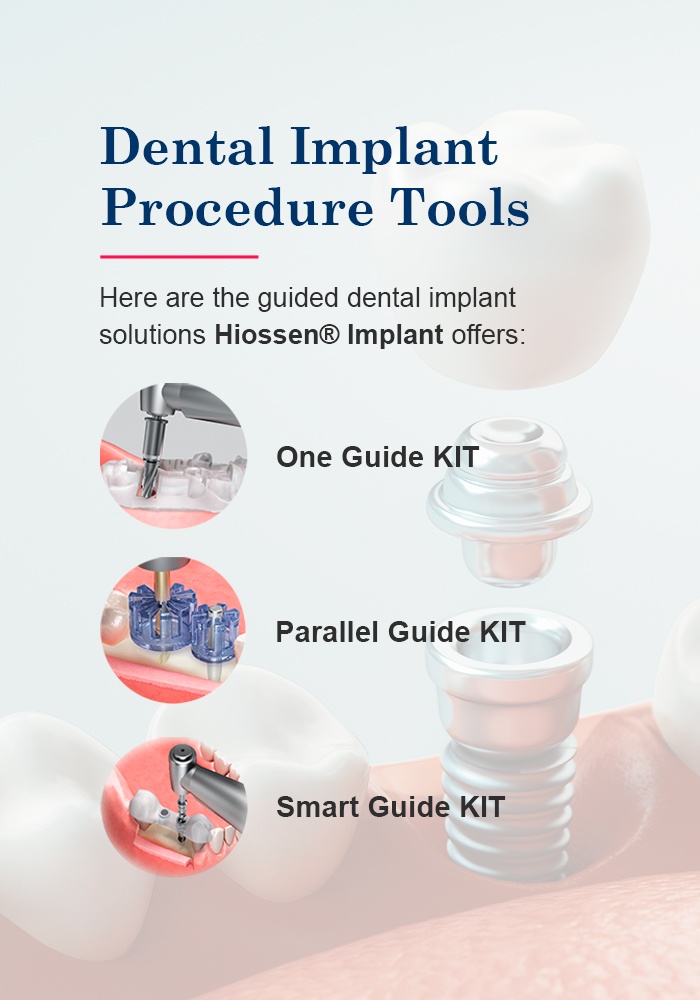
- One Guide KIT: This kit includes precise drill tools and guides. By adjusting drilling sequences based on bone density, surgeons can be as accurate, efficient and safe as possible. The kit features initial drills, flattening drills, a OneGuide drill, a tissue punch tool and drivers. It also features a 3D-printed guide based on a patient’s CT scan and mouth.
- Parallel Guide KIT: This kit is a dental implant drill guide that helps to make implant locating and directing simple without the need for a stent. Adaptable for both single and bridge surgeries, the kit has four components: an initial drill, guide pins to check the drill path, single guides to represent the size of the implant crowns and bridge guides for measuring the space from one drill point to the next.
- Smart Guide KIT: This kit provides a valuable dental implant guide without the need for CT photographing. With formed guides that sit atop teeth, surgeons can use the kit to drill an appropriate path and keep costs down for patients. The Smart Guide kit includes a single guide, small guide, large guide and a free-end guide. Each guide is designed to form to a tooth after being immersed in hot liquid, which minimizes slipping and keeps the guide in place. The guides can also be used with guide pins to make sure the placement is accurate during the formation process.
The truth about dental implants is that they require careful planning and individual attention. The tools, types and techniques used make a difference for each patient. It is worth it to invest in high-quality products and solutions that give each patient the best experience possible.
Choose Hiossen Implant for Your Dental Implant Solutions
Whether you’re a patient considering a dental implant or a clinician looking to offer the best implants in your practice, Hiossen Implant has a high-quality solution for you. Our dental implants provide state-of-the-art solutions to give patients and doctors peace of mind — from our implants made with bio-compatible titanium and designed for faster healing to our surgical guide solutions that allow for increased accuracy.
At Hiossen Implant, we aim to provide the best solutions for all individuals involved in the dental implant process. To learn more about how our dental implants or surgical kits could improve your experience, contact us today.
